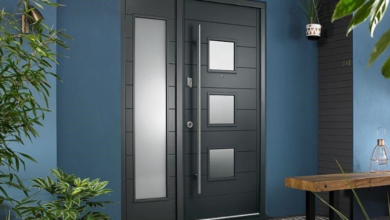5 Crucial Warning Signs your HVAC System Needs Replacing

A steady stream of warm or cool air keeps a home comfortable and safe. An aging HVAC system can lose its edge and struggle to maintain the right temperature. Recognizing clear warning signs helps decide when a replacement brings real benefits. Early detection of these signs protects against sudden breakdowns and rising costs. A reliable system ensures steady airflow, clean air quality, and consistent energy use. Paying attention to key indicators lets a home stay comfortable year after year and secures peace of mind about indoor conditions.
Uneven Airflow and Temperature Gaps
A system that struggles to send even air across all rooms can signal hidden wear in key components. Rooms near the unit often feel too warm or cold while distant spaces get barely any flow. Clear hot and cold zones are produced by air vents blowing weak or strong streams in various locations, which is uncomfortable. The amount of air that reaches living rooms is decreased by dust and debris in ducts, which also puts stress on the fan motor as it struggles to force air through. Although the route is improved by sealed duct connections and a fresh air filter continuous airflow gaps indicate that the core system is no longer operating at peak efficiency.
Frequent Breakdown Service Visits
A growing number of repair calls to heating and cooling Toledo experts can indicate that the system has reached its limit on reliable operation. Technicians replacing worn-out parts week after week reveal a struggle to keep the system running. Labor and part costs add up quickly when components like compressors, capacitors, and fan motors wear beyond simple fixes. A solid, new system offers consistent performance without repeated interruptions for repairs. Service visits that once happened once or twice each year can turn into monthly needs, signaling that the old system no longer meets basic demands or safety standards.
Soaring Energy Bills Without Added Comfort
Energy costs are climbing higher without any gain in home comfort point to falling efficiency inside the HVAC unit. An older system works harder to reach the set temperature, drawing more power from the grid. Worn compressors and failing coils use extra electricity while producing less effective heating or cooling. Exorbitant monthly expenditures diminish the return on energy saving technologies like programmable thermostats and constitute a constant burden on family finances. A modern replacement restores strong efficiency ratings and cuts energy use for each cycle. Lower utility costs balance out the investment in a new unit and deliver clear savings over time.
See also: Home Window Replacement That Pays Off in Energy Savings
Odd Sounds and Unusual Odors
A system that emits loud grinding, rattling, or screeching noises signals damaged bearings or loose internal parts fighting each cycle. An urgent need for examination is indicated by strange clanks and hums that become louder over the course of days. Musty or foul vent odors indicate the presence of mold or deteriorating duct insulation. Electrical problems in wiring or motor windings are indicated by a strong, burning scent. Clean airflow feels fresh and quiet, but persistent noise and odors distract from daily life and cut into clear air quality. A new system brings fresh, silent operation and removes risks tied to old, deteriorating components.
System Age Beyond Expected Lifespan
Any unit that is past twelve to fifteen years in age is probably at the end of its dependable life and can degrade performance very quickly. Some important components including compressors, heat exchangers and the evaporator coils will gradually wear out and lead to reduced capacity. Newer units are made by manufacturers, using better materials and superior technology that enable them to perform better, given the same conditions. An older system stands out with visible corrosion, faded labels, and worn insulation on refrigerant lines. Upgrading to a new, well-sealed cabinet and factory-tested components restores full capacity and extends the lifespan of the home’s comfort solution.
Conclusion
A prompt system replacement that restores efficiency and comfort is ensured by identifying obvious danger indicators. Declining performance is indicated by uneven airflow, frequent repairs, and growing energy costs. Age, strange smells and loud sounds all attest to the fact that essential parts are no longer functioning properly. The advantages of buying a modern HVAC system include reliable service without the need to contact experts regularly, easy control of the ambient temperature and lower energy bills. An upgraded system provides a comfortable environment all year round and protects energy costs and indoor air quality.




